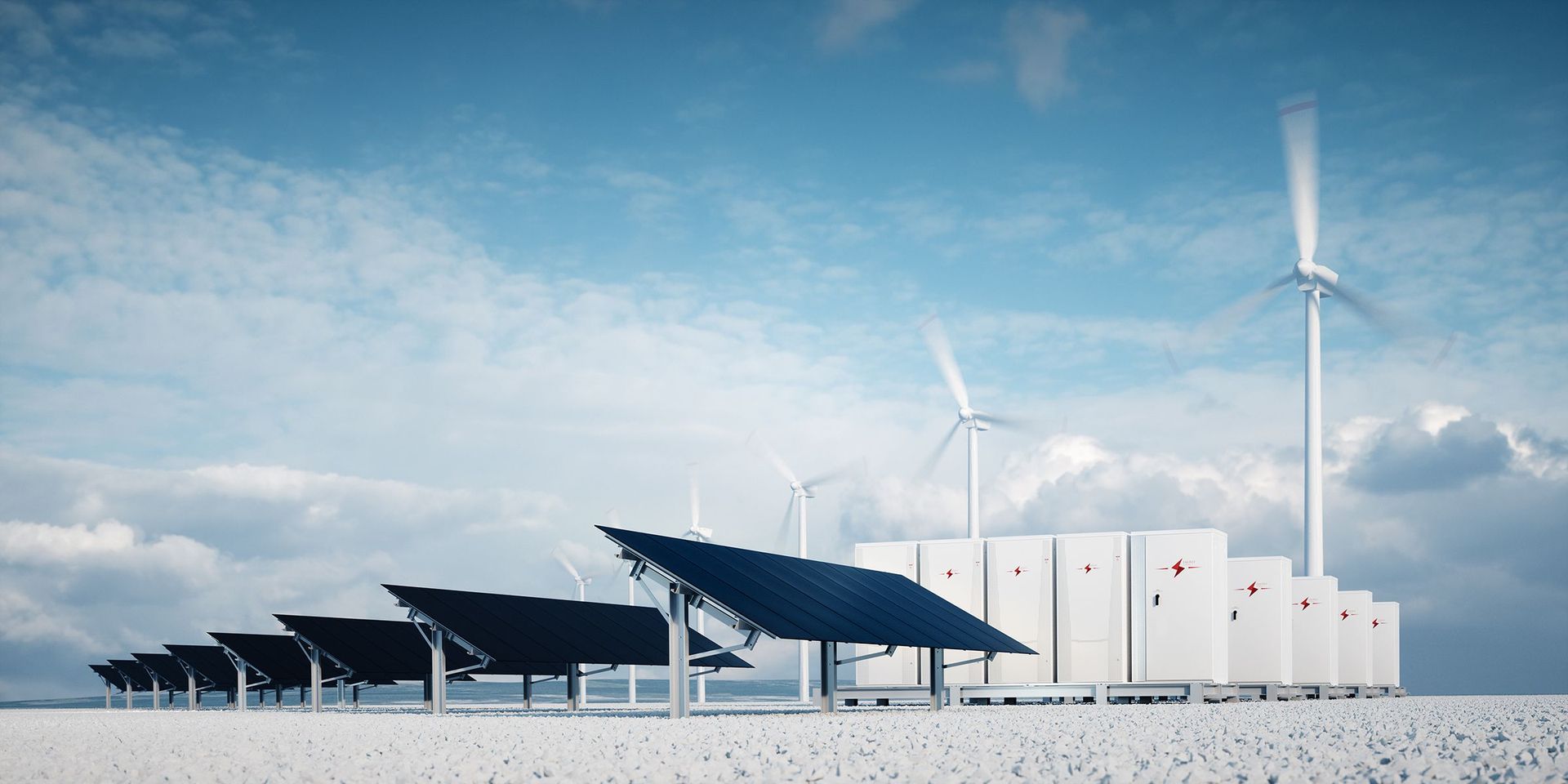First shift, then store
In our future energy systems we will pretty often see times where, let’s say, a sudden storm front brings heaps of cheap and green and beautiful but, alas, in that particular time unneeded wind power into the system. And we will see times where the opposite happens: a sudden shortage of wind and solar power. What can we do about it?

You will quickly turn to battery storage as the key solution. Batteries can physically store excess power and feed power back into the system when there is a shortage in the market/grid. A great solution, no question about it. But is it also the cheapest solution? Looking at the fundamentals and the current numbers of battery technology when asking if battery storage will be the key solution to the fluctuation challenge of renewables, we should think again:
- Utility-scale stationary batteries – just like pumped-storage hydroelectricity – have only one purpose: To provide flexibility to the energy systems on high-voltage transmission levels. Thus, flexibility is the only way they can make money.
- In order to make most of the impressive features of the technology, a battery should be deployed a lot, meaning many charge and discharge cycles in a short period of time. This is not ideal for storing electricity over a longer period of time. Or to put it differently: The longer a battery is holding on to the electricity it has stored, the less lucrative it will be.
- Large-scale batteries to support the grid are not cheap yet. The German utility STEAG is investing 100 million Euros into six battery systems amounting to 90 MW. This means one MW of batteries comes at 1.11 million Euros or 1100 Euros per kW. Just for comparison: German Baywa r.e. are planning a 176 MWp solar park in Spain, installation costs are expected to be at 700 Euros per kWp. Thus it is still cheaper to produce power than to store it. Sure, battery costs will hopefully decrease just like the costs of PV have decreased, but for the moment these are the numbers we have to work with.
So we should also think of other solutions for the fluctuation challenge of intermittent renewables until battery costs have significantly come down. Luckily, batteries are not the only assets which can provide flexibility to the energy system in the new energy world. Every CHP unit has flexibility, even the backup capacity unit in your local supermarket or high school. Most run-of-river hydropower stations have flexibility. And many power consumers can also provide flexibility to the system if they are able to be flexible in terms of when to take power out of the grid. What are the differences between these assets and a stationary battery?
- Their flexibility is a byproduct. Their core function is to produce power, heat, or both, or – when it comes to demand response – to produce whatever product the particular electricity consumer needs its electricity for. And since their flexibility is a byproduct, it is pretty cheap.
- They are small and they are many. They are usually too small to provide flexibility to larger systems like the grid on their own.
- They have ample and individual restrictions. Some have more flexibility than others. Some have flexibility only in wintertime. Some only in summertime. And on it goes…
In order to tap the flexibility all those assets have, you’ll need some system in place that aggregates the many small units into one larger – virtual – unit and at the same time takes every restriction of every unit into consideration. This is exactly what a Virtual Power Plant – a VPP – does. Instead of physically storing excess renewable energy and feeding it back to the grid, all units networked in a VPP dance around the actual feed-in of wind and solar power, following the lead of wind and solar in regard to their own power production or consumption. Over the last five years, we at Next Kraftwerke have aggregated a flexible capacity of around 1.000 megawatts in our VPP – out of an overall 2.800 megawatts capacity (including solar and wind). Using this flexible capacity by shifting generation and demand of small-scale units, we balance the fluctuations of solar and wind on a daily basis. The only investment costs incurred for these 1.000 megawatts of flexible generation and demand were the costs for connecting these flexible assets to our control system and the costs for setting up and operating the control system which processes live data from all assets and automatically dispatches their optimized schedules.
To put it in a nutshell, the current flexibility principle on national markets (e.g. markets for control reserve or spot markets for wholesale electricity trading) is “first shift, then store”. Why?
| Investment Costs | Variable Costs | |
Batteries P2X ("store") | HIGH (Initial investment to set up physical unit) | LOW (maintanance, electricity costs, trading costs) |
VPP ("shift") | LOW (no initial investment to set up physical unit, integration costs into VPP are negligible) | LOW (maintanance of VPP control system, trading costs) |
Now, let’s look at the limitations of a VPP and the potential to bring the two worlds – batteries and VPPs – together.
- Temporal dimension: Shifting small-scale generation and demand within seconds and for a time stretch of a couple of hours works perfectly fine. But the longer the stretch that flexibility is needed for, the harder it gets to harvest flexibility through shifting generation and demand. If there is no sun and no wind for a couple of days, a VPP will probably not carry the day and utility-scale stationary storage (batteries, pumped hydro) may be needed. So let’s clarify: Flexibility from storage and P2X technologies will be needed in our energy systems to balance the grid, but it will not be the first to be deployed within the “merit order of flexibilities”. It will only be deployed when the (cheaper) flexibility resources of a VPP are exhausted and prices for flexibility rise. This also means that we will probably need to wait for a higher percentage of solar and wind in the energy system until we’ll see the necessary flexibility prices on national energy markets to cover the (higher) investment costs for utility-scale stationary storage, pumped hydro storage, and P2X technologies.
- Spatial dimension: At first sight, the spatial dimension has no relevance in weighing the pros and cons of storing electricity vs. shifting generation and demand in a VPP. Both approaches allow for the geographically targeted use of flexibility on lower-voltage levels of the grid. But interestingly enough, VPPs today are mostly deployed on the national (transmission) grid level while batteries have found their market on lower voltage levels. Batteries today are used to increase personal consumption on the household level or to provide flexibility to regional grid operators on the distribution level. To a certain extent, we may even include EV batteries here since they are mostly charged on the distribution level. Now, this may change the economics of storage or P2X flexibility for national flexibility markets. If a VPP can tap into small margins of flexibility coming from units which are primarily used to balance the distribution network, these units may suddenly move ahead in the “merit order of flexibilities” – simply due to the fact that VPPs may now harvest their flexibility for the transmission level as a byproduct as well. This, in fact, is something we already see with the first power to gas unit in our VPP…
More to read
Now, what’s the big picture here apart from the intricacies of the new flexibility technologies and concepts illustrated above? We know already that solar and wind will trump conventional power plants in regards to costs and capacity; in many places of the globe this has already happened. What we are seeing right now is that, additionally, we have more and more non-conventional flexibility options which are already available – VPPs, batteries, P2X. Their market shares will increase just as well and they will establish a merit order of their own.
- Photo Credit: Sheila Sund, License: CC BY 2.0



